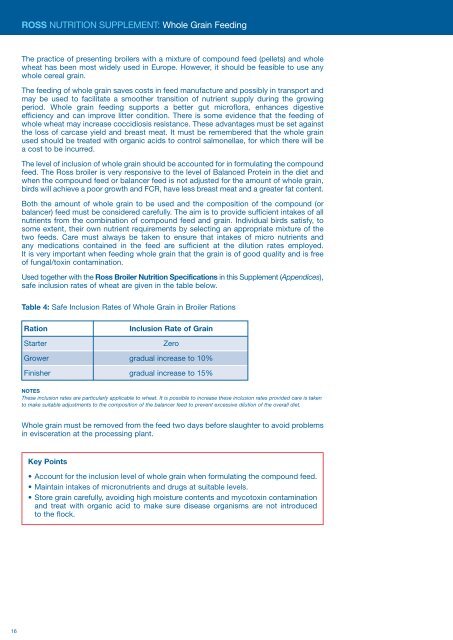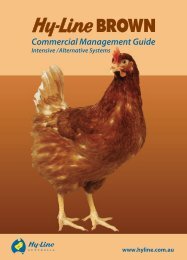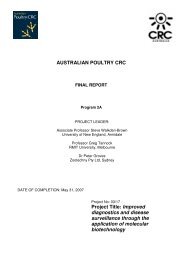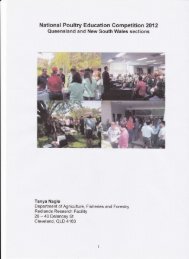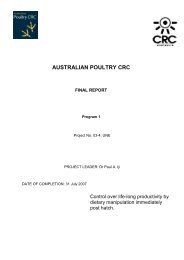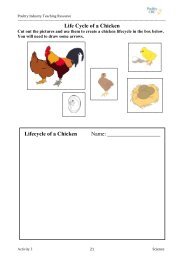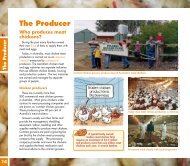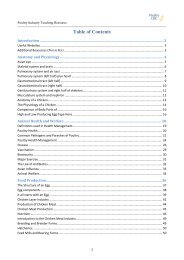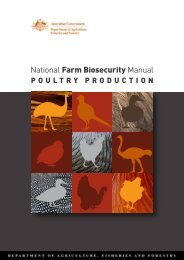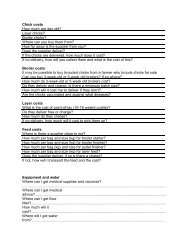Ross Broiler Nutrition Supplement - Poultry Hub
Ross Broiler Nutrition Supplement - Poultry Hub
Ross Broiler Nutrition Supplement - Poultry Hub
You also want an ePaper? Increase the reach of your titles
YUMPU automatically turns print PDFs into web optimized ePapers that Google loves.
ROSS NUTRITION SUPPLEMENT: Whole Grain Feeding<br />
The practice of presenting broilers with a mixture of compound feed (pellets) and whole<br />
wheat has been most widely used in Europe. However, it should be feasible to use any<br />
whole cereal grain.<br />
The feeding of whole grain saves costs in feed manufacture and possibly in transport and<br />
may be used to facilitate a smoother transition of nutrient supply during the growing<br />
period. Whole grain feeding supports a better gut microflora, enhances digestive<br />
efficiency and can improve litter condition. There is some evidence that the feeding of<br />
whole wheat may increase coccidiosis resistance. These advantages must be set against<br />
the loss of carcase yield and breast meat. It must be remembered that the whole grain<br />
used should be treated with organic acids to control salmonellae, for which there will be<br />
a cost to be incurred.<br />
The level of inclusion of whole grain should be accounted for in formulating the compound<br />
feed. The <strong>Ross</strong> broiler is very responsive to the level of Balanced Protein in the diet and<br />
when the compound feed or balancer feed is not adjusted for the amount of whole grain,<br />
birds will achieve a poor growth and FCR, have less breast meat and a greater fat content.<br />
Both the amount of whole grain to be used and the composition of the compound (or<br />
balancer) feed must be considered carefully. The aim is to provide sufficient intakes of all<br />
nutrients from the combination of compound feed and grain. Individual birds satisfy, to<br />
some extent, their own nutrient requirements by selecting an appropriate mixture of the<br />
two feeds. Care must always be taken to ensure that intakes of micro nutrients and<br />
any medications contained in the feed are sufficient at the dilution rates employed.<br />
It is very important when feeding whole grain that the grain is of good quality and is free<br />
of fungal/toxin contamination.<br />
Used together with the <strong>Ross</strong> <strong>Broiler</strong> <strong>Nutrition</strong> Specifications in this <strong>Supplement</strong> (Appendices),<br />
safe inclusion rates of wheat are given in the table below.<br />
Table 4: Safe Inclusion Rates of Whole Grain in <strong>Broiler</strong> Rations<br />
Ration<br />
Starter<br />
Inclusion Rate of Grain<br />
Zero<br />
Grower gradual increase to 10%<br />
Finisher gradual increase to 15%<br />
NOTES<br />
These inclusion rates are particularly applicable to wheat. It is possible to increase these inclusion rates provided care is taken<br />
to make suitable adjustments to the composition of the balancer feed to prevent excessive dilution of the overall diet.<br />
Whole grain must be removed from the feed two days before slaughter to avoid problems<br />
in evisceration at the processing plant.<br />
Key Points<br />
• Account for the inclusion level of whole grain when formulating the compound feed.<br />
• Maintain intakes of micronutrients and drugs at suitable levels.<br />
• Store grain carefully, avoiding high moisture contents and mycotoxin contamination<br />
and treat with organic acid to make sure disease organisms are not introduced<br />
to the flock.<br />
16


